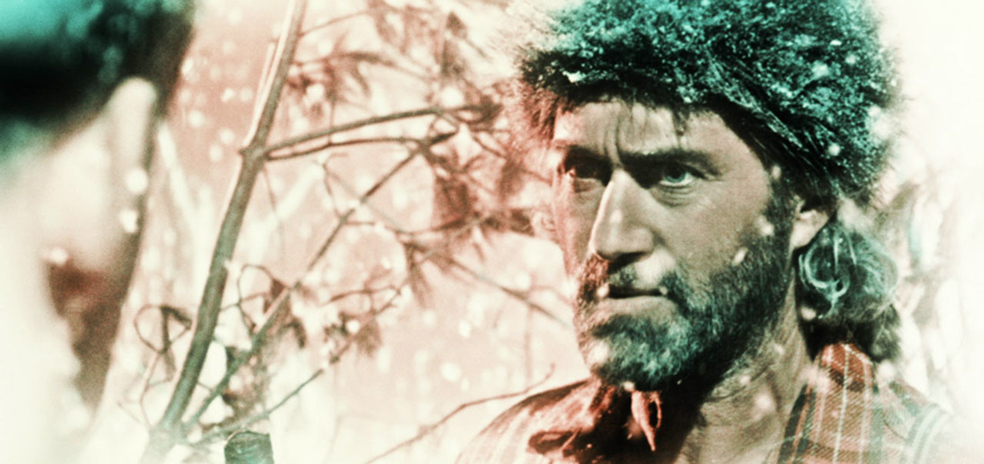
From the moment the opening credits begin in The Forbidden Room, Guy Maddin’s latest and his first feature length collaboration with Evan Johnson, you know that what you are about to see is a bizarre and singular view of the world and the films that aim to catalogue it. We’re treated to rapidly shifting stylised titlecards, designed by Johnson and aiming to look as if ripped straight from once-loved prints of Hollywood melodramas, adventure classics and Universal Monster films. The Forbidden Room isn’t a straight-forward extension of this first coda in what amounts to an oft-beautiful ode to cinema, it jettisons much of the formalist trappings each of those titlecards would suggest, but it retains that spirit, a seemingly endless parade of genre parodies and miniature tales of love, loss and identity crises.
Spirit is at the forefront of the film, having been an extension of Maddin’s long-gestating art project SEANCES, which aimed to re-create lost silent shorts, of which either titles or titles and brief plot descriptions still remain. This is essentially the premise of The Forbidden Room, though this connection to actually tangible echoes of the past is only ever revealed outside of the film itself; on its face it is a surrealistic deep-dive that strings along a series of comedic sketches, each playing off of genre elements from times gone by. Whilst this premise is very much in Maddin’s wheelhouse – Brand Upon The Brain! and Dracula: Pages From a Virgin’s Diary are two recent silent films he has made, among others – its execution seems markedly different, the whole viewing experience is a refreshing change of pace with a somewhat disappointing execution.
Whilst it’s a clear visual shift away from Maddin’s last feature, Keyhole – an underrated oddity which marries a discomforting sense of sexuality and fetishisation with a wonderfully alluring rabbit-hole narrative in a mysterious house – on a thematic level, The Forbidden Room isn’t worlds apart; he’s still exploring base ideas of lust and sexual expression and using a mysterious series of locked rooms as a narrative device. What truly marks it apart is the relentless story-within-story approach taken by Maddin, Johnson and co-writer Robert Kotyk, it’s a Russian nesting doll of a film by way of Pythonesque connection. Many of the transitions are premised on slapstick or lowbrow humour, making The Forbidden Room an unlikely madcap comedy, albeit a very hit-and-miss one.
A lot of the gags in the film are very impressive – a man outbidding his exact double to buy back his two-faced Janus bust, a husband reduced to a vinyl record that answers “yes”‘ “no”‘ or “maybe”, an inspired ode to the fetishisation of buttocks in the form of a ’80s New Wave song composed by Sparks and performed in the film by a lounge singer who appears as a figure in a decaying film of his own – yet what is frustrating throughout is not only the oft-clumsy jumping points for new narratives but also the duration of the film as a whole. There’s an entire section of the film about a love triangle between bone doctors and an injured motorcyclist that could have been excised entirely. In fact, many of the films within The Forbidden Room are set up for jokes that don’t always pay off, or for the furthering of a visual concept that, by virtue of the sheer eclectisicm of the narratives within, isn’t enough to carry it. It’s not that a direct line of focus is necessary, but the sheer volume of ideas and images on show in the film tends to overwhelm, and whilst it’s hard to say that a film designed around the outlandish and imaginative should have been pared back, as it stands, The Forbidden Room is a surprisingly difficult film from Maddin.
Formalist rectrictions, and thereafter experimentation as problem solving, is something Maddin has peppered throughout his filmography – from the manipulation of archive footage and re-creation of memories and dreams in My Winnipeg to the musical elements of The Saddest Music in the World. Teaming up with Johnson, who is listed as having designed the special effects in the film, he here embarks on an even greater usage of rear projection, set design and post-production work than in his earlier work, and the film feels like a mammoth effort of artistry and performance. The intertitles throughout, though, are one of the biggest casualties in the war of diminishing returns, some are consistently amusing (“Squid Thief!”) but others tend to align too closely to the same gag, the overintellectualised unnecessary explanation intertitle gets invoked four times, each joke a less funny echo of the one before it. The leanings towards humour, on the whole, are what strip The Forbidden Room of a lot of its emotional potency, it lacks the haunting nature of Maddin’s earlier films, though select moments still shine through, and his re-teaming with Brand and Keyhole composer Jason Stacek is a welcome addition.
Through the SEANCES project, Maddin and Johnson have amassed an array of impressive performers, a lot of whom appear in this film. Alongside Maddin regulars Louis Negin and Udo Kier, the credits list Mathieu Amalric (whose scenery-chewing is a delight), the underused Ariane Labed, musician Lewis Furey (and his daughter Clara, in a leading role), Maria de Medeiros, Charlotte Rampling and Sophie Desmarais, among others. One of the ever-amusing visual jokes is the series of titlecards announcing the actors and their roles, designed in the style of whatever film happens to be playing.
Whilst The Forbidden Room is overlong and messy, it is still a lightning bolt of creativity from one of the most enigmatic and compelling filmmakers working today. Guy Maddin has always dragged us into a bastardisation of film’s past but here he has us soak in it, surrounded by the wonderous and weird tales of submarine crews, saplingjacks and amnesaics.
Around the Staff
| Ivan Cerecina | |
| Dominic Barlow | |
| Felix Hubble |
